How To Grow Hydrangeas
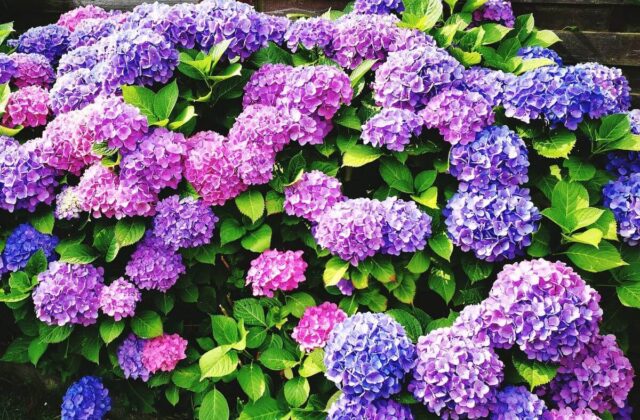
Introduction
The botanical name for the lovely shrubs commonly known as hydrangeas is Hydrangea. While the majority originate from East Asia, there are also varieties found in North America. These plants typically develop into a compact bush, ranging in height from less than 1 meter to 2 meters. In this article, we investigate the proper fertilization techniques and soil amendments to understand how to grow hydrangeas that thrive in nutrient-rich environments, producing abundant and stunning blossoms.
The Different Hydrangeas
Experiment with different hydrangea varieties and uncover how to grow these versatile plants, whether in containers on a patio or as stunning border plants in your garden. Before moving on to the planting advice for various hydrangeas, it is important to learn about their different types.
- It’s typically the Hydrangea macrophylla, commonly known as hydrangea, that captures our attention with its large, round panicles boasting a spectrum of colors, ranging from pink to blue and everything in between.
- Hydrangea paniculata, on the other hand, presents elongated, cone-shaped inflorescences in white, cream, or varying shades of deep pink, creating a captivating display from August to mid-autumn.
- For those who appreciate the classic hydrangea look, Hydrangea arborescens, or Smooth Hydrangea, forms spherical, white, or pink summer inflorescences, shaping into a ball-like bush about 1.50 meters wide.
- Hydrangea quercifolia, true to its name, showcases leaves resembling those of an oak tree, with stunning autumn colors. This variety forms a relatively compact bush, and its end-of-summer flowers manifest as large white, cream, or pink spikes, either standing erect or gracefully drooping.
- Hydrangea serrata, a slow-growing, small, rounded shrub, presents flowers arranged in flattened half-spheres, offering a delightful range of colors from white to pink, and even blues and purples.
- The climbing Hydrangea seemanii stands out as the sole hydrangea species with evergreen foliage, while Hydrangea petiolaris, another climbing variety, showcases white, ethereal blooms and attractive bark, adding a decorative touch during winter when the leaves have fallen.
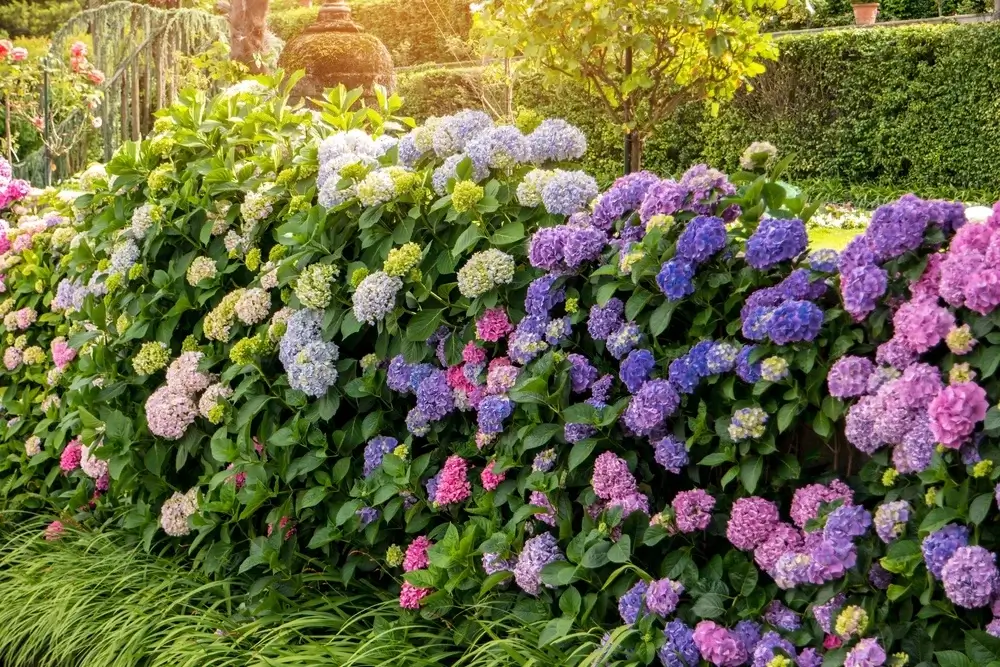
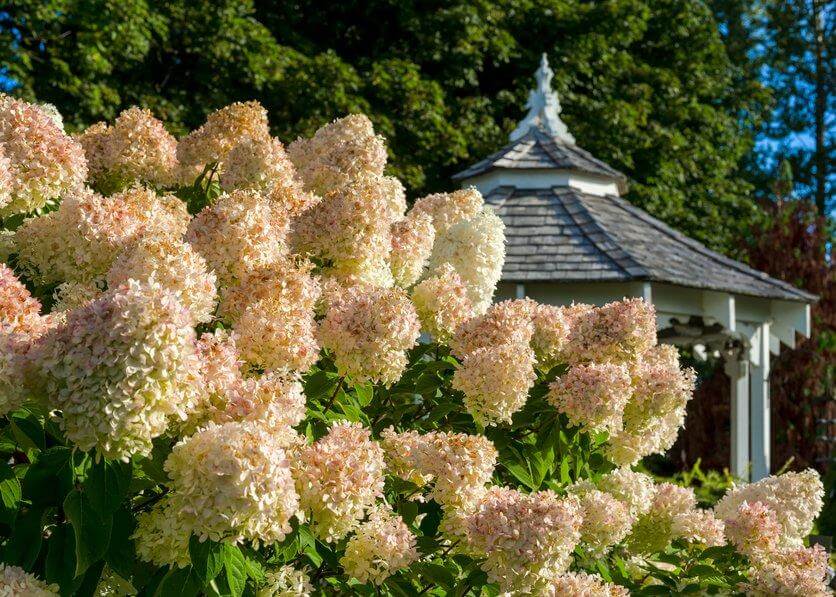
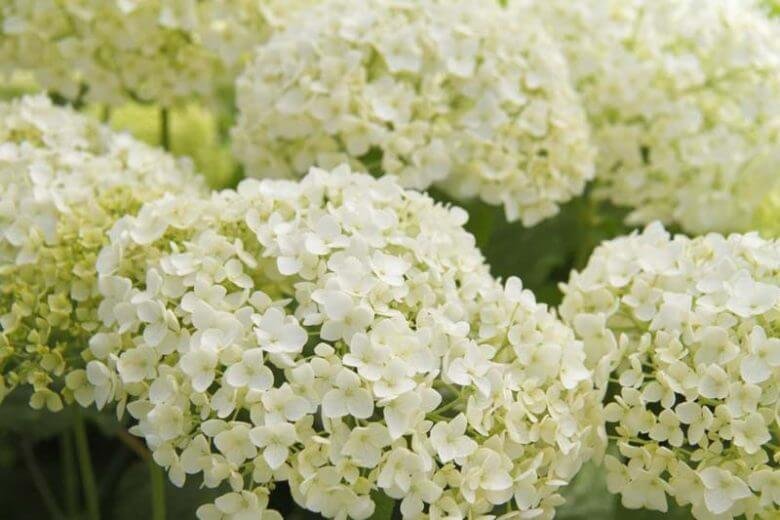
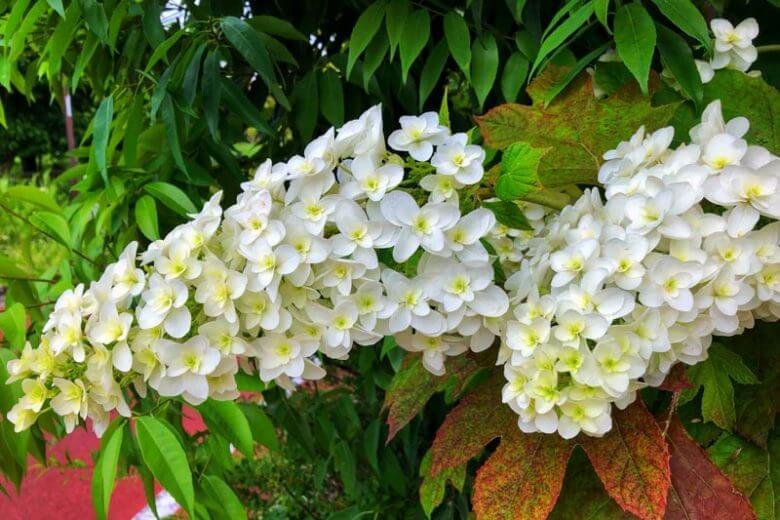
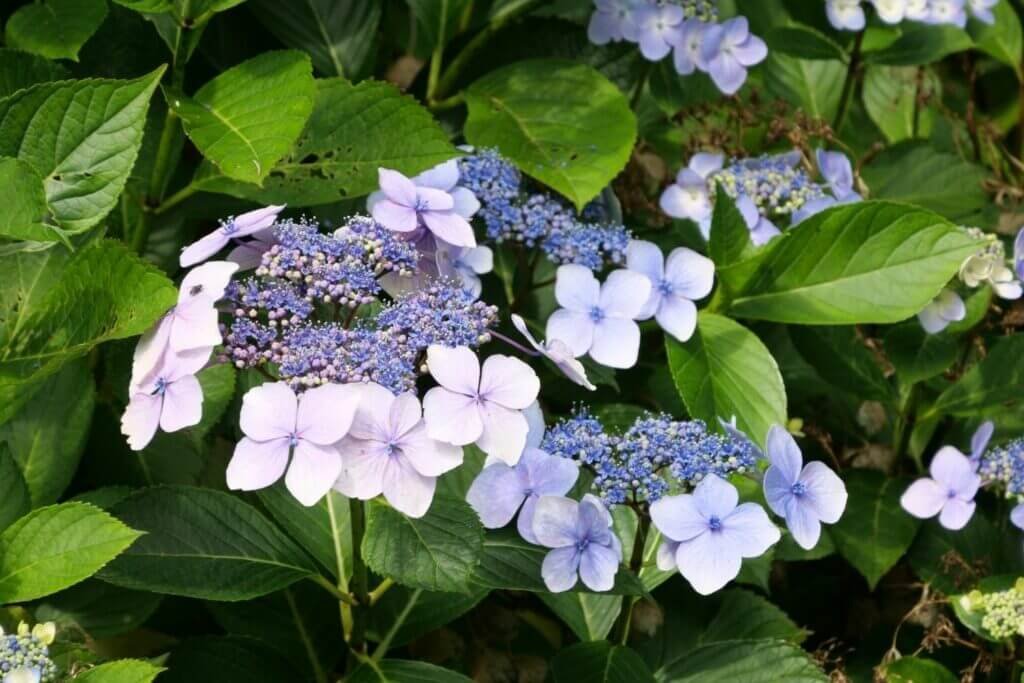
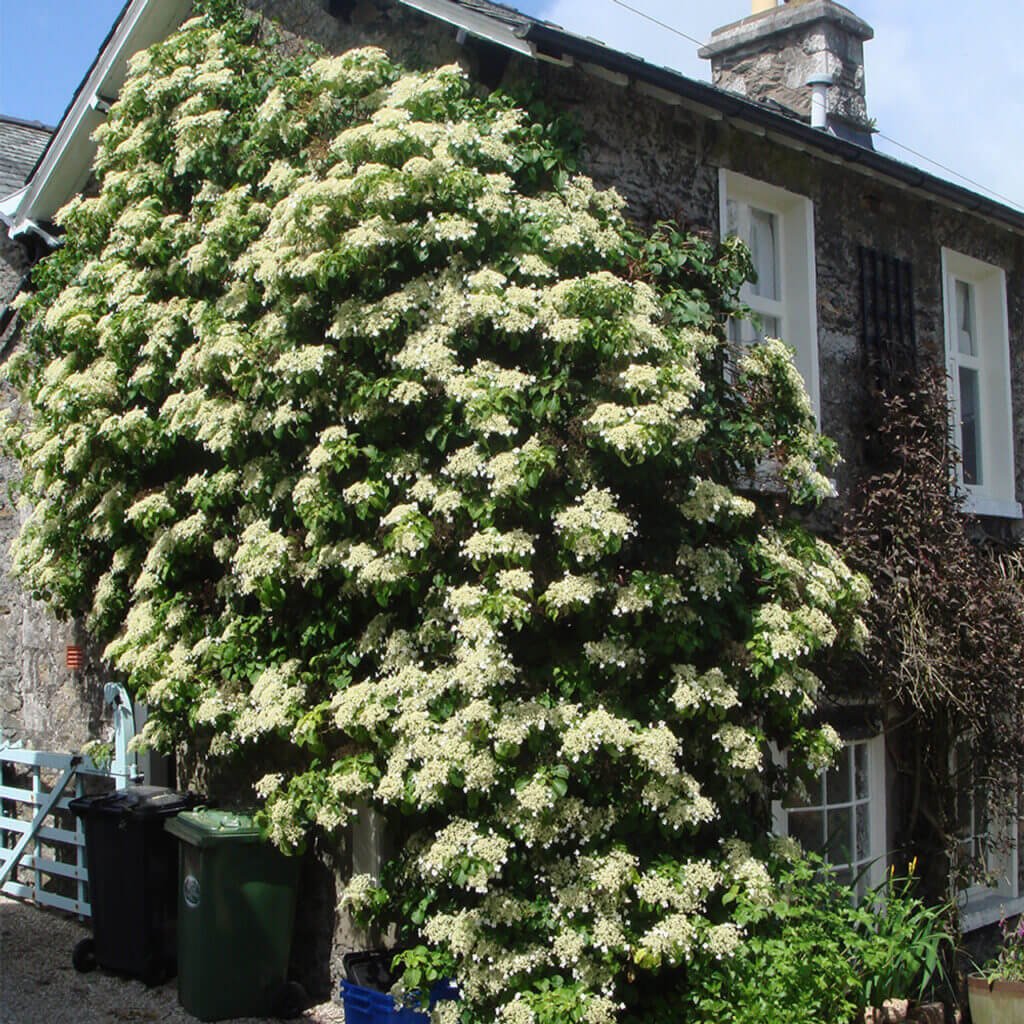
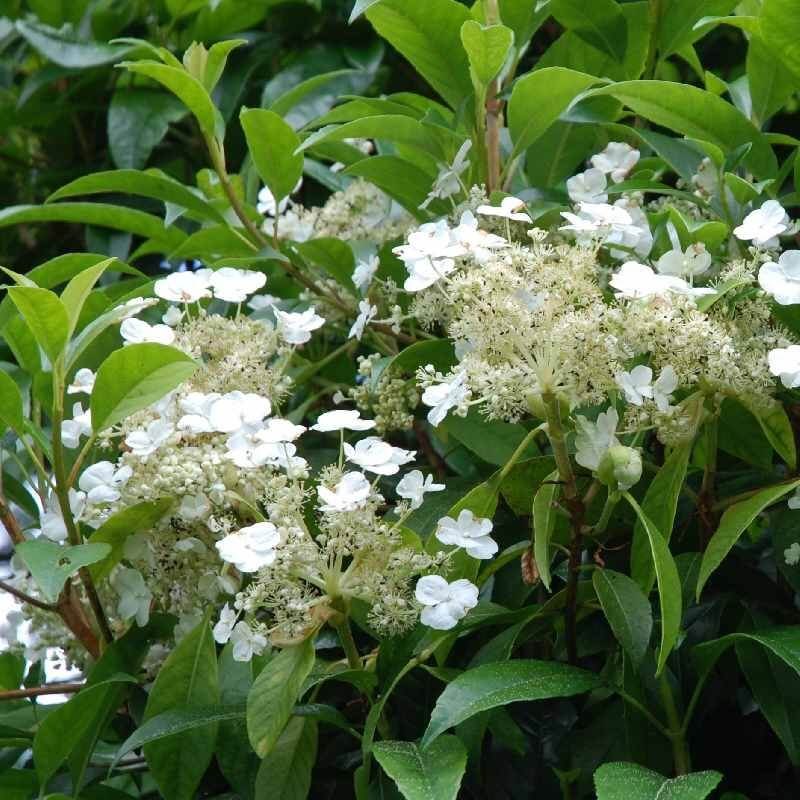
Where To Plant Them
Hydrangeas generally like rich soils, preferably non-calcareous and fresh, well-drained and well-supplied with organic matter. Shady environment will favor them because they do not like being planted in full sun. Understanding the watering needs is crucial when learning how to grow hydrangeas, as they prefer consistently moist soil without becoming waterlogged. They can also suffer from its too-strong rays. But do all hydrangeas have these same needs?
Hydrangeas For Shade
Most hydrangeas appreciate partial shade and acidic soil that remains cool, even relatively humid. However, there are differences between the various species of hydrangeas. We can already divide hydrangeas into 2 groups: the Asian ones, which like shade, coolness, and acidic soils, and the American hydrangeas which can grow in full sun, and do not fear heat and limestone soils.
- You will plant this type of hydrangea in partial shade, they still appreciate a little sun, if possible filtered by foliage, outside the hottest hours, therefore in the morning and late afternoon sun.
- Hydrangea macrophylla is the typical hydrangea, which likes mild and humid climates.
- The Serrata hydrangea is native to the mountains of Japan, so it is very adapted to mountain climates with harsh winters. You will find a location in the shade or even partial shade in the coldest regions.
- Climbing hydrangeas should also be planted in the shade.
Sunlit Hydrangeas
- You can plant panicle hydrangea, and Hydrangea paniculata in full sun, they need light to flower generously. You will therefore choose a well-exposed location, with cool and light but rich soil. It tolerates the cold very well.
- Hydrangea arborescens also appreciate the sun and can even tolerate a period of drought, although of short duration, and high temperatures. This hydrangea is very hardy.
- Hydrangea quercifolia likes sun and cool, light soils, but it can withstand a short dry period, like the tree hydrangea.
Hydrangeas For Limestone Soil
- Just like hydrangeas to plant in the sun, hydrangeas that tolerate limestone are few, and they are the same! You will therefore choose panicle, tree, or oak leaf hydrangeas for this type of soil. Be careful, they remain hydrangeas and will do better in neutral soil than in frankly calcareous soil, the least demanding being the arborescent Hydrangea which grows naturally in poor and stony soils.
- On the other hand, you will avoid planting hydrangea in clay soil. Too compact, it tends to become waterlogged as soon as it rains, which is very bad for hydrangeas.
- Please note: If you want a hydrangea but the one you have chosen prefers acidic soil while your garden has limestone, dig a very large hole, mix a lot of heather soil, and compost with the removed soil.
Hydrangeas For Acidic Soil
Make sure to plant hydrangea macrophylla, hydrangea serrata, all climbing hydrangeas, and those that can tolerate limestone in acidic, fresh, and humus soil without fail.
Did you know that the acidity of soil can drastically affect the color of blooms? It’s true! By ensuring that the soil acidity is at the correct level, you can achieve vibrant and beautiful blooms that are sure to impress. Learning how to grow hydrangeas in acidic or alkaline soil allows you to manipulate the flower color, with blue blooms in acidic conditions and pink in alkaline
- For blue hues, it is important to maintain low pH levels, with a target range of 5.2 to 5.5.
- For pink hues, it is important to maintain higher pH levels, with a target range of 6.0 to 6.2.
The Key Lies In The Soil’s Chemical Composition.
If you aim to cultivate a specific hue, conduct a soil test beforehand. In regions with abundant rainfall, the soil tends to be acidic due to rainwater acidity.
In case your soil naturally has a high pH level, consider using fertilizers to adjust the pH before planting. This is a more prudent approach than making drastic pH changes after the root systems have adapted to the existing soil conditions.
The soil’s nutrient content increases with a higher pH level. Swiftly altering acidity can harm your plants, potentially causing issues like iron deficiency, leading to yellowing leaves.
Unless you intend to cultivate a sizable climber or expansive shrub, cultivating hydrangeas in pots might be more manageable. It allows for better control of soil acidity in smaller quantities compared to attempting such control over larger areas in your backyard or front lawn.
Potted Hydrangeas
- Certain hydrangeas are suitable for growing in pots due to their compact growth habit. For small spaces, you may want to consider serrata hydrangeas, which are smaller in size compared to other hydrangeas. Alternatively, you can opt for other hydrangea species that have been specifically chosen for their small size.
When and How To Plant Your Hydrangeas?
The Right Period
In absolute terms, you can plant hydrangeas all year round, except for periods of frost and extreme heat. If you plant them in the fall, they will have time to take root well before summer. Thanks to the first autumn rains, the soil will be very moist and easy to work. Their roots will have plenty of time to anchor themselves deeply in the soil to withstand the heat of the following summer without flinching.
And conversely, for regions with cold climates, the ideal is to plant hydrangeas in spring, so that they have recovered well when the cold arrives.
Good Planting Method:
Investigate the proper fertilization techniques and soil amendments to understand how to grow hydrangeas that thrive in nutrient-rich environments, producing abundant and stunning blossoms.
- Make a hole in the garden 40 to 50 cm in all directions and mix your soil with heather and compost. If your soil is compact, add sand and mix everything well. If you don’t have compost, add leaf mold to the mix. A supply of dried horn or dried blood will help the plant to recover well.
- Take the root ball out of its pot and lightly scratch the root system, especially if the roots have formed a bun in the pot, which is the case when they no longer have room to develop. You can soak the clump for a few minutes so that it is well-rehydrated (you can take it out when there are no more bubbles).
- Place your hydrangea so that the surface of the root ball is barely above ground level; it will sink a little when watering.
- Fill with the prepared substrate and pack, then water thoroughly.
- Mulch the surface with pine bark which will keep the soil cool.
- Give them regular and above all generous watering, especially during the first weeks after planting.
- Carefully monitor the water needs of the young hydrangea the following summer.
- In general, in flowerbeds, there are at least 1.5 meters between each foot. If you want a high hedge, you can space each foot 2 meters apart.
Hydrangeas In Pots
- Hydrangeas can be planted in pots without any problem. Select a container with a wide and deep perforated bottom, 0.4 to 0.5 m deep and in diameter.
- Create a drainage layer at the bottom, with large gravel or clay balls.
- Fill it with potting soil and heather soil. Choose enriched potting soil, otherwise, you will add compost or other organic matter. Not only do you use heather soil, but it is also poor in nutrients and hydrangeas need fertile soil, rich in organic matter.
- You can also check out online resources or local gardening workshops to gain insights into how to grow hydrangeas successfully in your specific climate and soil condition.
Prune hydrangeas by removing dead or weak wood. Shape the plant before new growth appears in late winter or early spring. Different types need specific pruning techniques for healthy growth and abundant blooms.
Maintenance Tip
Hydrangeas: A Landscaper Advice
Enhance your garden’s appeal by mastering how to grow hydrangeas as both standalone focal points and complementary plants in mixed borders or flower beds. Hydrangeas can fulfill various roles in your garden: they can be positioned at the base of a flower bed, interspersed within a mixed hedge, along the edge of a pathway, standing alone, or even placed in a pot. When planted alongside companions such as heather, ferns, hostas, foxgloves, and brunneras, they contribute to a natural blend, akin to a priest’s garden. For sun-loving hydrangeas, consider pairing them with other shrubs, perennial geraniums, nepetas, and even grasses
In containers, hydrangeas serve as decorative elements for courtyards, paths, balconies, or terraces, adding beauty through both their blossoms and foliage, creating an appealing volume. Embark on a journey to create a hydrangea haven by discovering how to grow these charming flowers, adding a touch of elegance and color to your outdoor spaces
The enduring charm of hydrangeas has captivated many gardeners, making them a sought-after addition to gardens. Whether adorning a wall along the Atlantic coast, thriving in regions with an oceanic climate, or basking in the sun in gardens with poor, slightly calcareous soils further south, there’s a hydrangea variety suited to your specific environment. The key lies in selecting from the diverse species and numerous varieties that align with the conditions you provide.
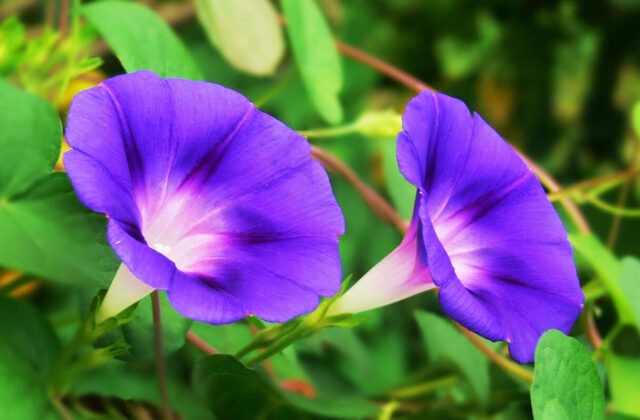
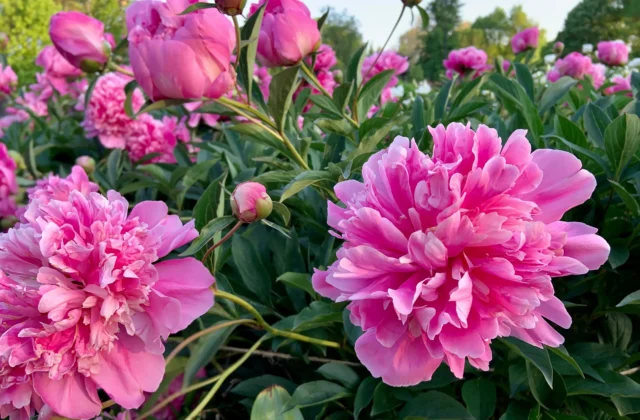
10 comments
F*ckin¦ remarkable things here. I am very happy to look your post. Thank you a lot and i’m looking ahead to touch you. Will you kindly drop me a mail?
Can you be more specific about the content of your article? After reading it, I still have some doubts. Hope you can help me.
I don’t think the title of your article matches the content lol. Just kidding, mainly because I had some doubts after reading the article. https://accounts.binance.com/es-MX/register?ref=JHQQKNKN
Thanks for sharing. I read many of your blog posts, cool, your blog is very good.
Can you be more specific about the content of your article? After reading it, I still have some doubts. Hope you can help me.
Thanks for sharing. I read many of your blog posts, cool, your blog is very good.
I don’t think the title of your article matches the content lol. Just kidding, mainly because I had some doubts after reading the article.
Can you be more specific about the content of your article? After reading it, I still have some doubts. Hope you can help me.
Your point of view caught my eye and was very interesting. Thanks. I have a question for you.
Thanks for sharing. I read many of your blog posts, cool, your blog is very good.